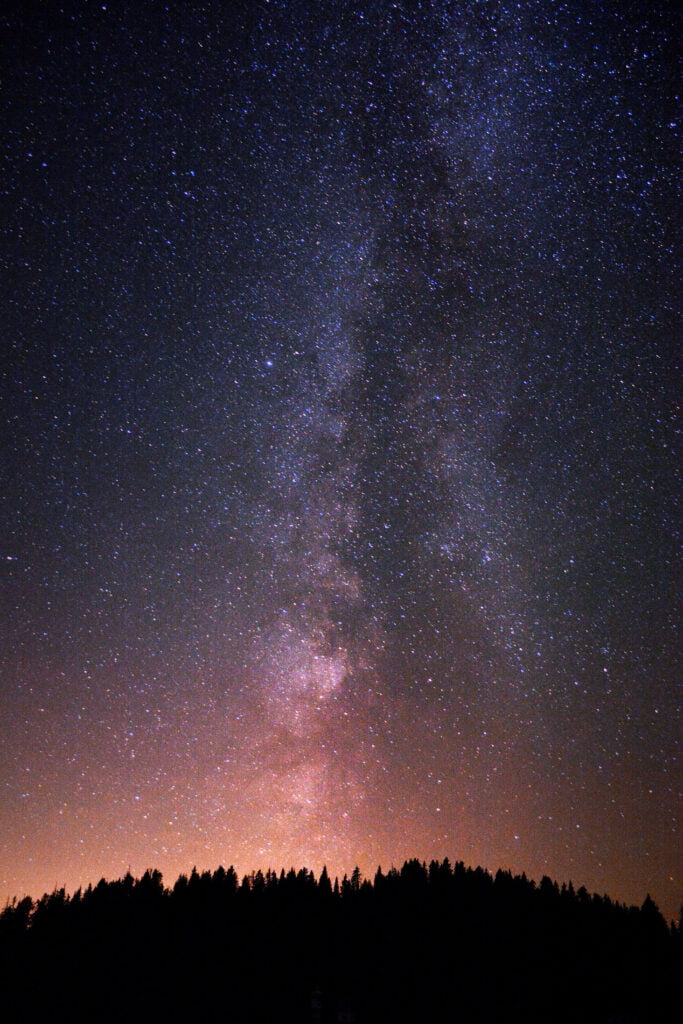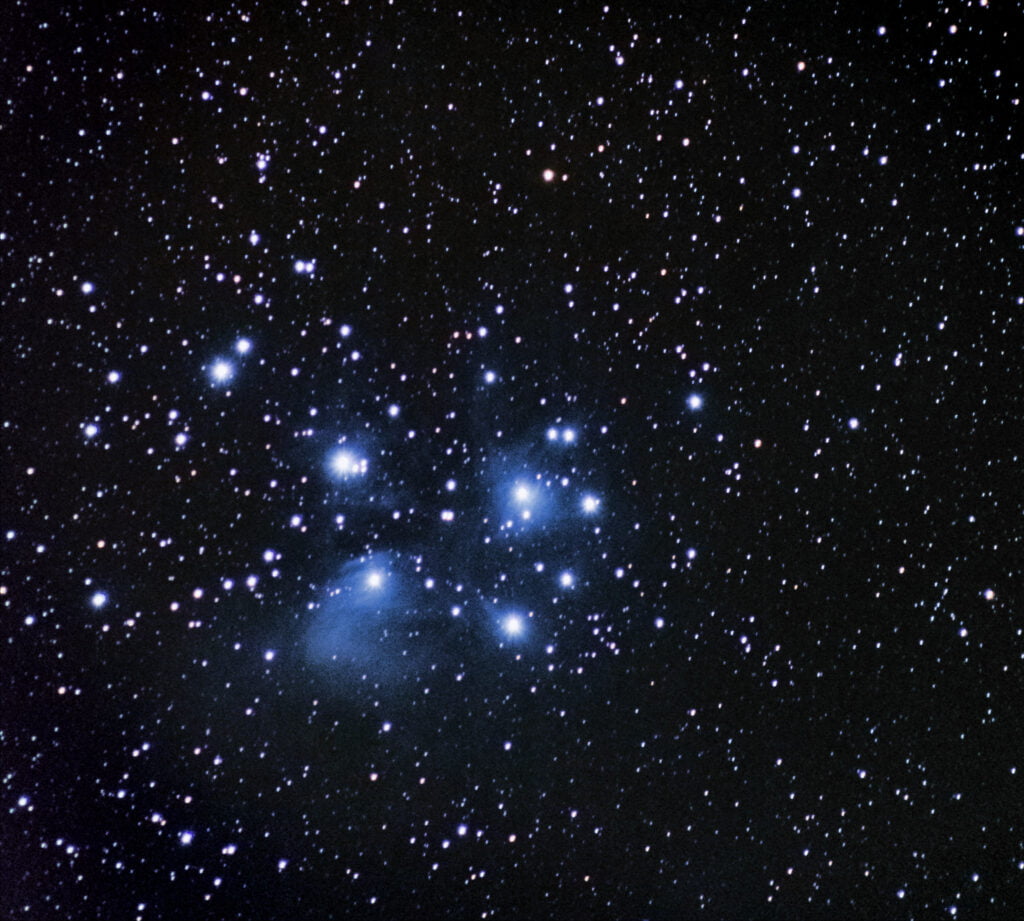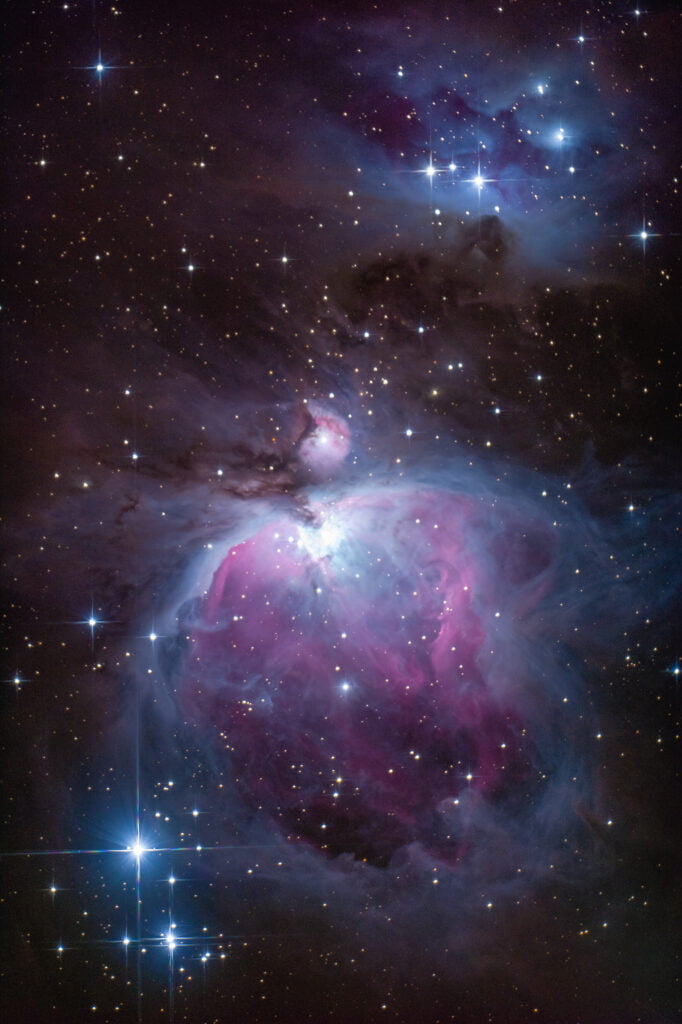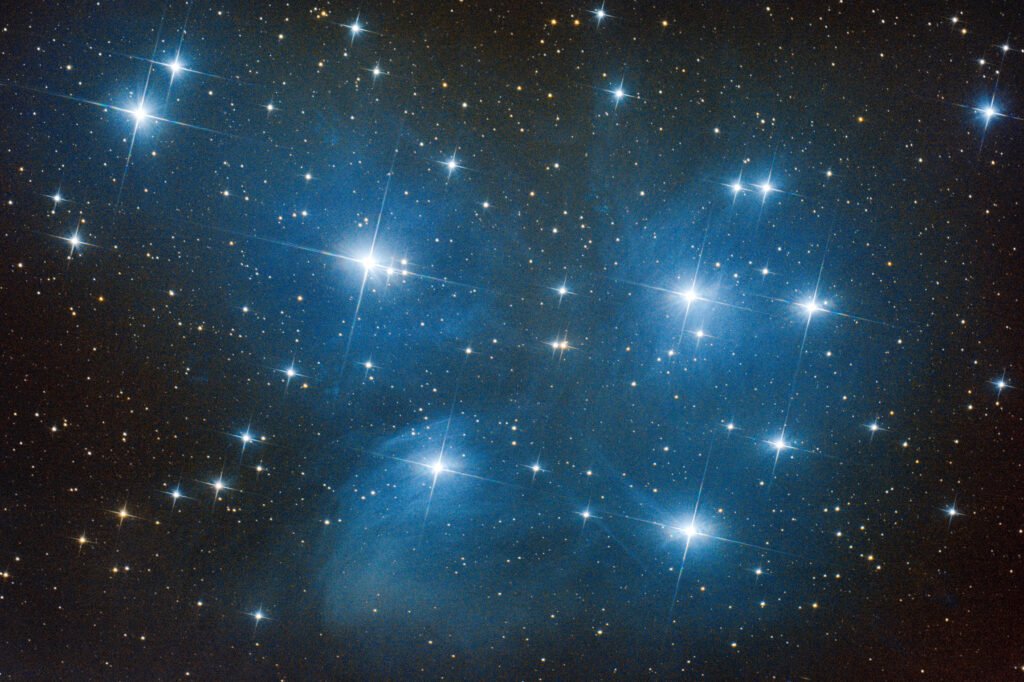Exactly one year ago I fulfilled a small dream i had for a long time. I bought a professional telescope to capture fantastic images of galaxies, nebulas and planets in the night sky. I would like to take you on a journey on how my obsession with astrophotography started and what i have learned so far.
I got my first DSLR camera in 2013 and it was fun to learn the basics of digital photography. Having only a kit lens back then I was soon realising the limitations of different focal lengths and f-stops. About a year later I stood on a mountain during new moon and I could faintly see the core of the milky way above the horizon.
The interest was sparked
I took a photo and I remember being so fascinated that my camera could capture details of the milky way that my eyes werent able to see. Being proud of this image I compared my photo to other peoples images of the milky way and I quickly realised that I simply couldnt capture such epic shots with a cheap kit lens. So I wasnt really interested in the night sky anymore and accepted the fact that I had to wait until I could buy a better lens to continue with this field of photography.
In early 2017 a friend lent me a 300 mm telephoto lens. Playing around with such a narrow field of view I took some pictures of the moon and was very excited to be able to see craters on the terminator line. I researched a bit about astrophotography and found out that the Andromeda galaxy is even bigger than the moon so i wanted to capture this object. Because of the rotation of the earth I had to select a short shutterspeed in order to avoid getting star trails. Using a tripod is also mandatory to avoid a shaky image. Stacking several images to increase the exposure and reducing noise is a common process for astrophotography. So after installing such a software and capturing many images I got this result:
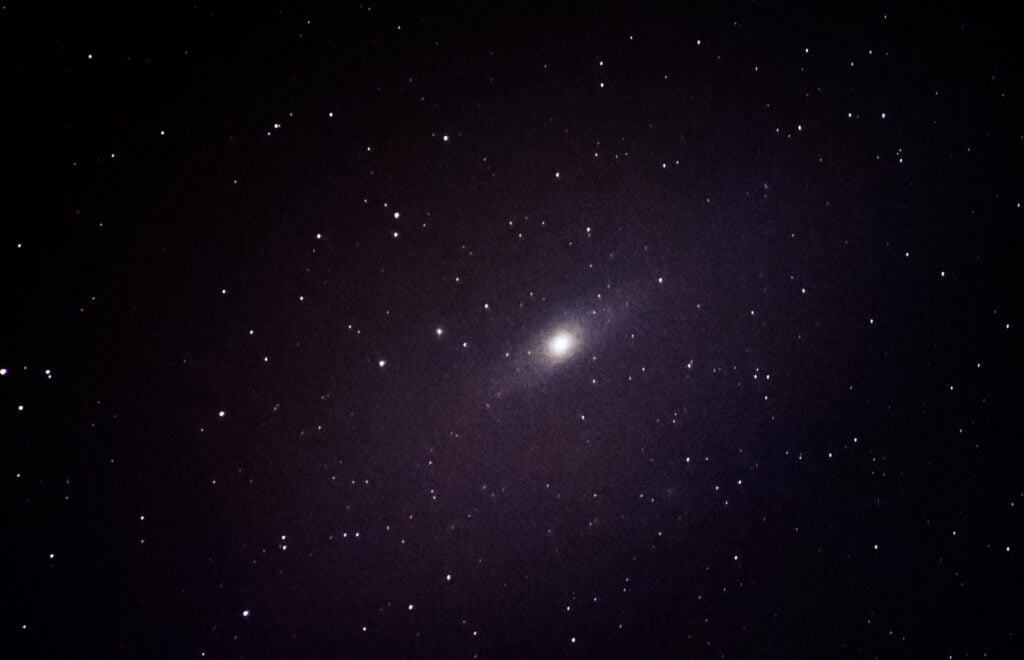
This image might not look great, but instead of being disappointed it sparked something in me. Because this is one of the easiest night sky objects to photograph I wanted to get a decent image of the Andromeda galaxy in the upcoming winter.
The homemade tracker
During summer it isnt possible to see this galaxy so i used the time to build a tracking mount for my camera and this specific telephoto lens out of Lego. I spent many hours to build a motorized contraption that is stable and precise enough to track the stars for nearly an hour. After many redesigns and rebuilds I finally took this apparatus to the test in October. I drove to a dark place and set up this device with my camera in it. I put it into interval shooting mode and collected dozens of tracked long exposures. The following day I stacked many of those images with different parameters in the stacking software to find out the optimal settings. When I first saw the results I felt relieved because this home made tracking system definitely made a huge difference.
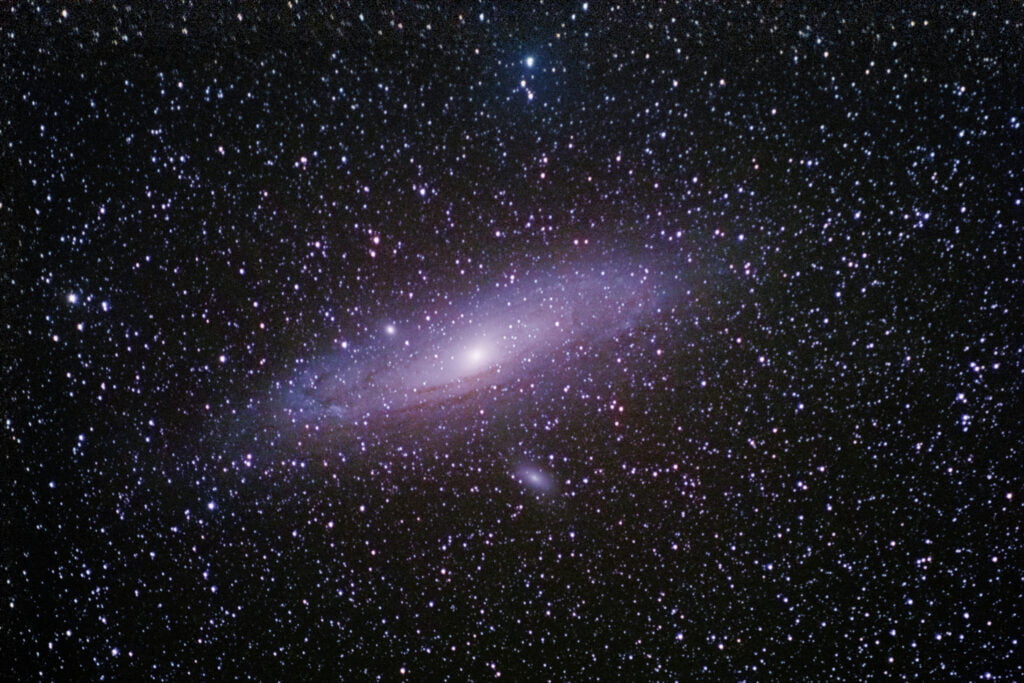
I was so fascinated to see the dark dust lanes in front of the bright core of the Andromeda galaxy and also to be able to recognize the smaller satellite galaxy M110 below it. With this tracking system I also tried to image smaller objects at night, like the Orion nebula and the Plejades. Even though the system worked fairly well, the focal length of 300 mm wasnt simply enough to capture great details of such smaller and fainter nebulas.
The professional telescope
I knew that one day I’ll buy myself a telescope with which I would get such stunning images that would blow my mind. So on Pi Day in 2020, March 14, I finally bought a Newtonian telescope with a focal length of 1000 millimeters and a mirror diameter of 200 millimeters. With such a high magnification a stable mount on a tripod is necessary and also a guiding camera is mandatory in order to track the stars precisely.
In the following months until autumn I learned a lot about operating a telescope. How to set it up, align it with the axis of earths rotation, to focus precisely to get sharp images and to stack the images after a long night of shooting. That summer, Mars, Jupiter and Saturn stood in opposition, so closest to earth, and with the help of a 3x Barlow lens, so a tripled focal length of 3000 millimeters, I even managed to capture decent photos of those planets with lucky imaging. This is the process of filming an object through the telescope with a short shutter speed to get thousands of frames and taking only the sharpest ones of those to stack the final image.
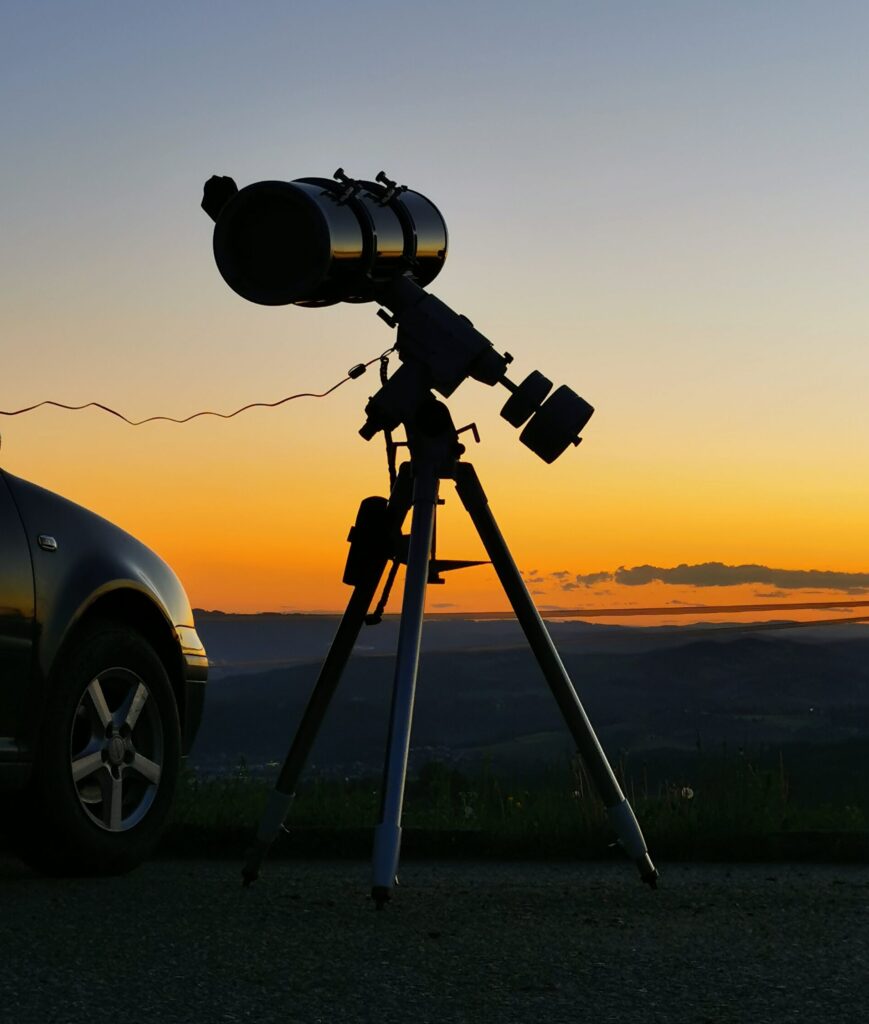
After months of practising and learning and also failing winter arrived. The best season to photograph the galaxy that got me interested in Astrophotography years before. In December, when the nights are longest in the northern hemisphere and when the weather is very cold and the air therefore extremely calm and clear, I drove into darkness, far away from city lights, on a mountain in the alps. It was freezing cold and setting up my gear wasnt really fun, but I had a good feeling that this could be a special night. No clouds, no artificial lights and a clear view of the galaxy. I double checked the focus, the guiding system and the exposure and let the interval shooting handle the process of taking pictures. I sat in the car for the next hours and hoped for the best. After several hours I packed the gear in the car again and drove home with a pretty good feeling. The next day I started stacking and processing the photos and was awestruck when I saw the resulting image.

The amount of details I could capture in this photo is fascinating. The spiral arms and the dust lanes convey the feeling of a giant disk floating in space that is over 200 000 lightyears across and pretty similar to our home galaxy, the Milky Way.
Addicted by capturing such epic images I continued to photograph my favourite deep sky objects over the next weeks, including the Orion nebula and the Plejades. To see those beautiful nebulas and to witness how my skills developed over time gives me great joy and immense motivation to continue this hobby.
If you wanna see more photos of galaxies and nebulas check out the dedicated deep sky images portfolio item.
